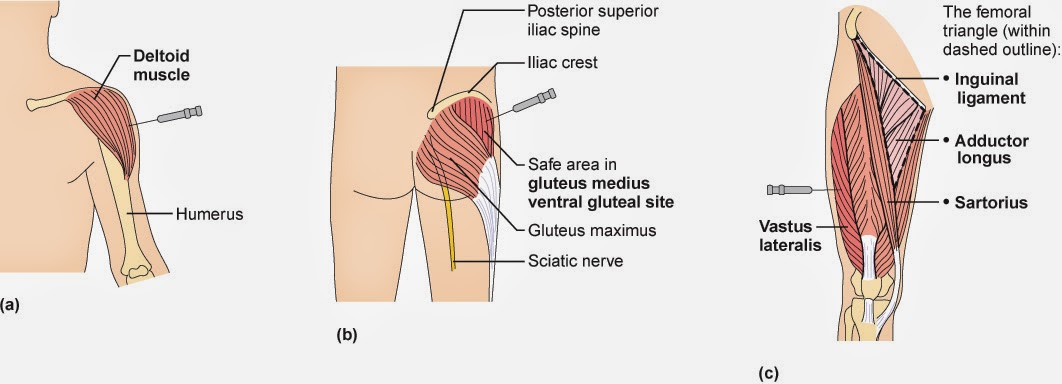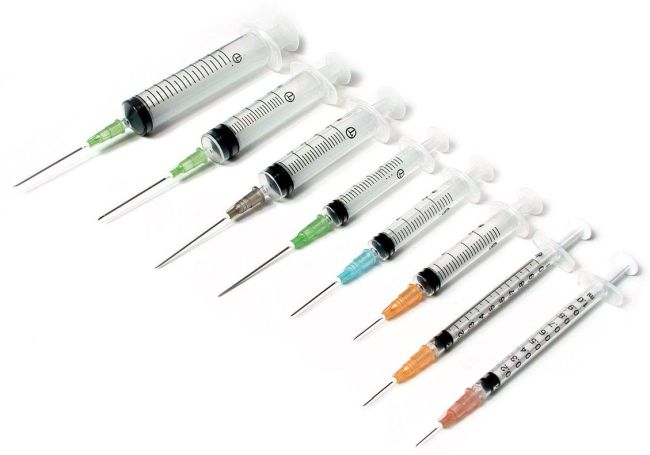A Retired Registered Nurse about Vitamin B12 injections
How to Inject Vitamin B

My Experience with B12 Injections
I recall years ago in nursing school when my lab supervisor asked me to give her routine insulin shot. This would be my first actual injection that I would administer as a nurse in training, and I must say, at the time it was quite nerve racking. As a student of nursing, I had become very acquainted with the nervousness that came with performing certain tasks under the scrutiny of professors, veteran nurses and other supervision. So, with a mild background noise of familiar anxiety, I retrieved the supplies, washed my hands and then pulled opened the insulin specific needle-syringe combination packaging, tore open two swabs then laid it all out on a clean surface.
After positively identifying my patient (my lab supervisor), and double checking that the insulin type (rapid acting Humalog) was accurate and not expired, I proceeded to uncap the needle, picked up the vial of insulin and then promptly botched the draw by ramming the tiny needle tip into the metal seal of the insulin vial, rendering the needle dirty, dull and useless. This drew a laugh from my many peers observing me. I had to begin the whole procedure over again with a red face, sweaty hands and a determination to get it right the second time. The second round I performed with laser precision, redeeming myself.
As a former nurse, I have given hundreds of injections of all types, at all possible injection sites, for innumerous reasons and with differing patient tolerances. As a practicing nurse, over time the administration of injections to my patients and clients has become routine and somewhat second nature. Yet, there remained always something peculiar about jamming a sharp object into someone’s flesh and injecting a foreign substance into them, let alone the thought of stabbing myself with one of those damn things.

Self-Injecting experience
My first experience with self-injections came later in life after a revealing visit with my doctor. At that time, I was experiencing what I felt were signs and symptoms associated with low testosterone. After hearing my complaints, my doctor ordered a blood draw and few days later my results were available. In his office, he informed me that it appeared that my ‘T’ levels were indeed below the average for a man of my age and that replacement therapy was indicated, if I desired. He also mentioned that my vitamin D levels were low, as well.
Since I had the doctors ear and even though I was not experiencing acute signs nor symptoms of low B12 (pernicious anemia), I took the opportunity to ask him about the possibility of beginning monthly vitamin B12 injections He was aware of my years of nursing practice and thoughtfully considered my request. He responded that there would be no harm with my beginning monthly injections of B12 alongside my hormone replacement and supplemental vitamin D.
Because of the clinic’s discharge policy, at the end of my appointment I was required to be given intramuscular self-injection training by my doctor’s nurse. I completed my training on vitamin B-12 and testosterone self-injections and was released from the office with my prescriptions, though it was like old hat.
I have never been anxious about receiving an injection, but I must admit that in the beginning the thought of giving myself one was a bit strange. At first, I found the twisting and contorting in front of a full length mirror while fumbling with a syringe and needle was like playing the game Twister with a sharp object in a carnival funhouse. Yes, it was awkward in the beginning, but over time I became comfortable and relaxed with my new routine.
As for my injection site of choice, I chose the upper buttock’s (gluteus medius) mainly because of the size of the muscle and the relative ease I have accessing it. I have also accessed other sites for my B12 injections, including, the upper arm (deltoid), thigh (vastus lateralis), and the buttocks (dorsogluteal). The most important thing to remember is to find a site that’s comfortable for you, and develop methods where you will be certain to avoid contact with bone.
Places to Inject

The most difficult part of self-injecting for me was the initial jab. The key to a painless injection generally comes with the speed at which I pierce my skin, travel through the sub-derma, sub-cutaneous fat and into the muscle. Imagine throwing a dart. It is important to accomplish the stick in one, rapid movement. The actual injection push speed should be gauged by the viscosity of the fluid you are injecting. For example, my testosterone is suspended in a viscous oil and should be pushed slowly to avoid tissue damage at the site. Since B12 is water based it allows for a quicker push. But, if either substances are pushed too quickly the resulting damage to the tissue can cause a nasty charley horse like pain that can persist for hours or days.
Vitamin B12 is water soluble and can be administered by intramuscular or deep subcutaneous injections, so regardless of whether you inject into fat or muscle, it will absorb into your body. Given this, the length of the needle is somewhat optional. I use a 1” to 1 ¼” needle, assuring a deep injection. Remember, it is possible for the B12 to leak out of the site if the needle is to short and the injection site is too shallow.
I generally use an 18-gauge needle to draw the fluid into a 3ml syringe. For the push, I routinely stick (pun intended) to a 23 gauge needle, though your doctor or pharmacist may have their own opinions on needle gauge or even syringe volume. My feeling is that if you use any smaller gauge of needle you risk damaging the surrounding tissue at the injection site.
For example, think of a two garden hoses, one smaller diameter and the other one larger. The resulting force of the water coming out of the smaller one will be greater than the larger one, thus a smaller gauge needle has a higher risk of causing damage to the soft tissue leading to possible pain and tenderness at the site. The push rate also influences the potential for tissue damage, so it’s good to take your time (a count of five) when pushing the plunger of your syringe to deliver your vitamin B12.

While you are developing your own system for self-injections, don’t forget to implement an aseptic technique to reduce your risk for infection. Aseptic simply means being free from contamination caused by harmful bacteria, viruses, or other microorganisms, or in another word, sterile.
Along with a clean surface to work from, a thorough washing of your hands should become a habitual first step prior to handling your vial or ampule, syringe and needles. In addition, alcohol swabs are suggested to clean the site before and after self-administration to assure your skin is free of potential infectious contaminants, as well as to blot any blood that may possibly ooze from the site.
So, for whatever reason you have chosen to begin your B12 injections, always keep in mind that you are doing a great service to the overall health of your body at a cellular level. The steps I have outlined are for informational purposes only and not meant as a complete how-to for subcutaneous and intramuscular injections. Before self-injecting, I always recommend seeking professional instruction from a certified healthcare practitioner.
Reasons to inject Vitamin B12
• DNA synthesis
• reducing the risk of heart disease
• energy production
• nerve cell health
• red blood cell formation
• neurological function
What Vitamin B12 Injections do for Me

I think of the maintenance of my health as an insurance policy. Along with exercise, eating nutritious food, and taking supplements, the addition of vitamin B12 injections to my routine offers additional benefits too numerous to ignore. Not only do I benefit from a noticeable boost in my energy levels, but I also have a peace of mind knowing that my body has ample B12 to maintain optimal neurological function and cell formation while reducing my chances of developing heart disease. As evidenced by the results of my annual physicals, the effectiveness associated with my addition of B12 is evident, and the low cost associated with it is a premium I am willing to pay to maintain my good health baseline.
Bob Scottland Retired R.N.

